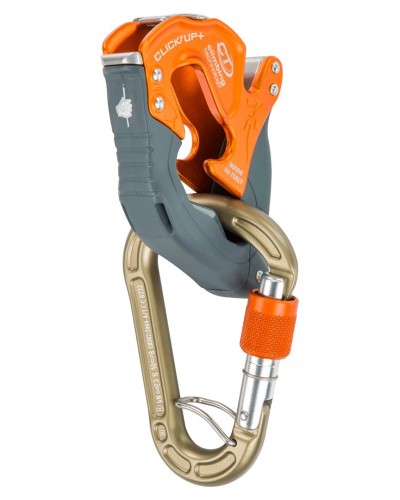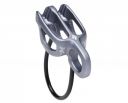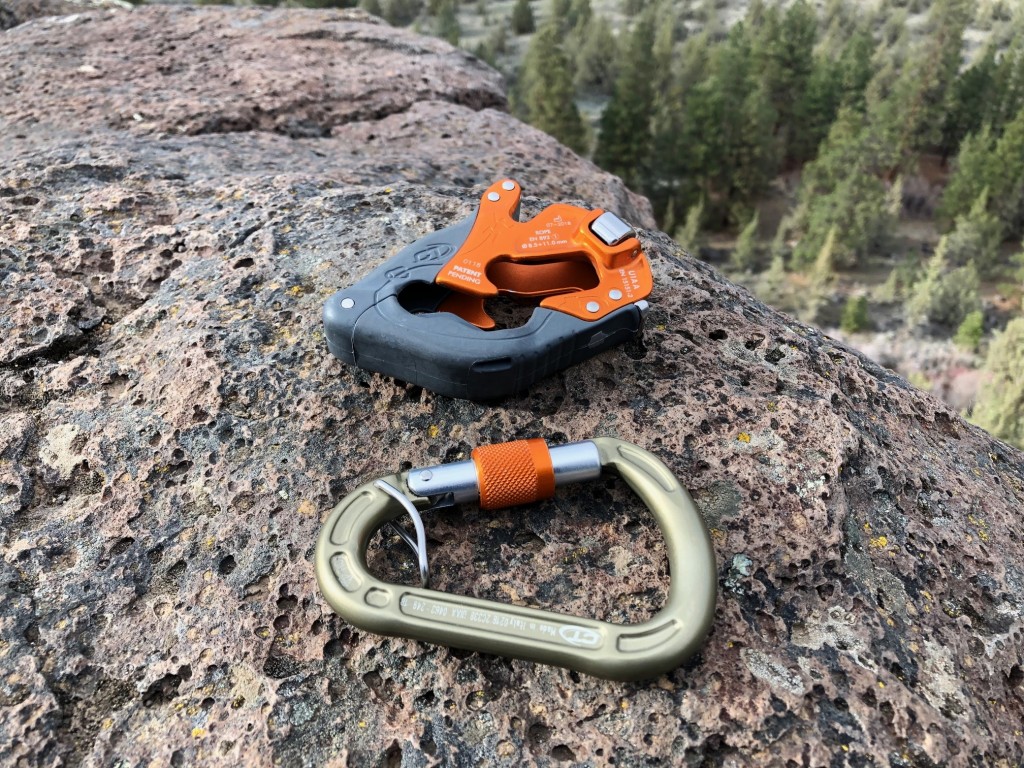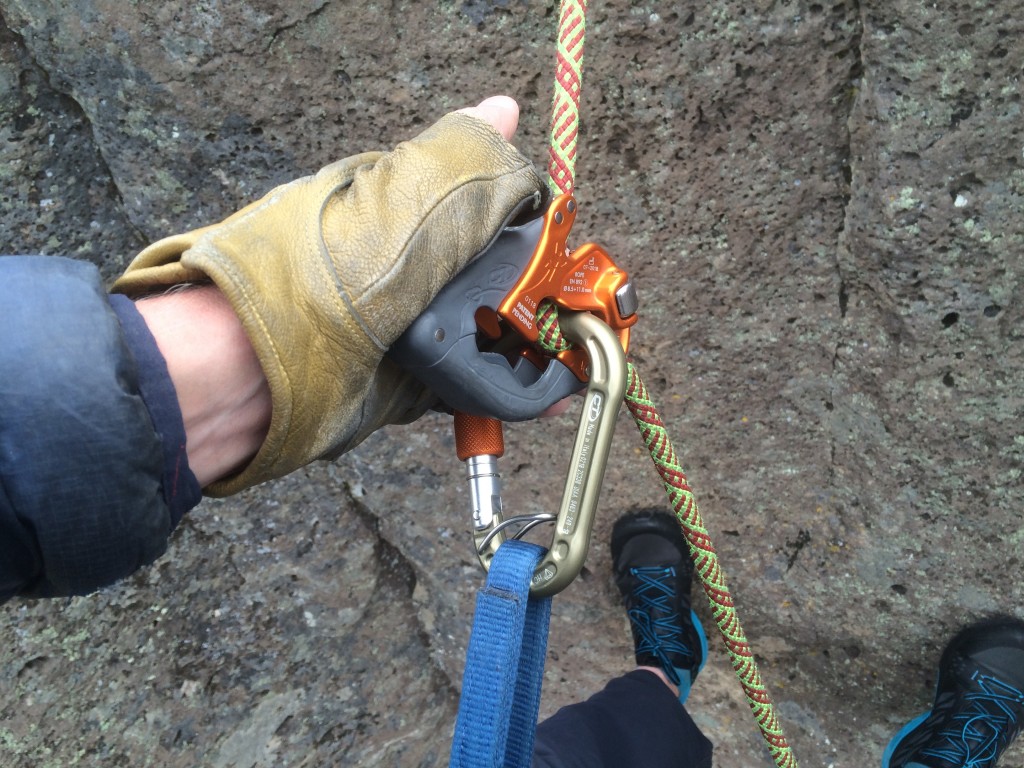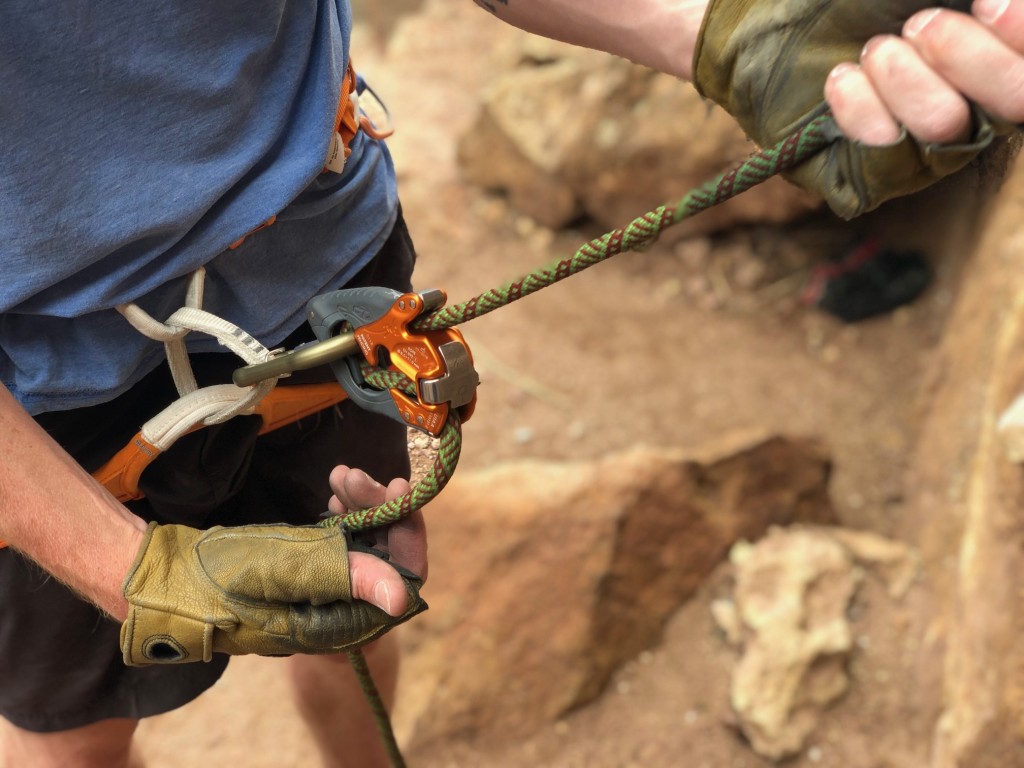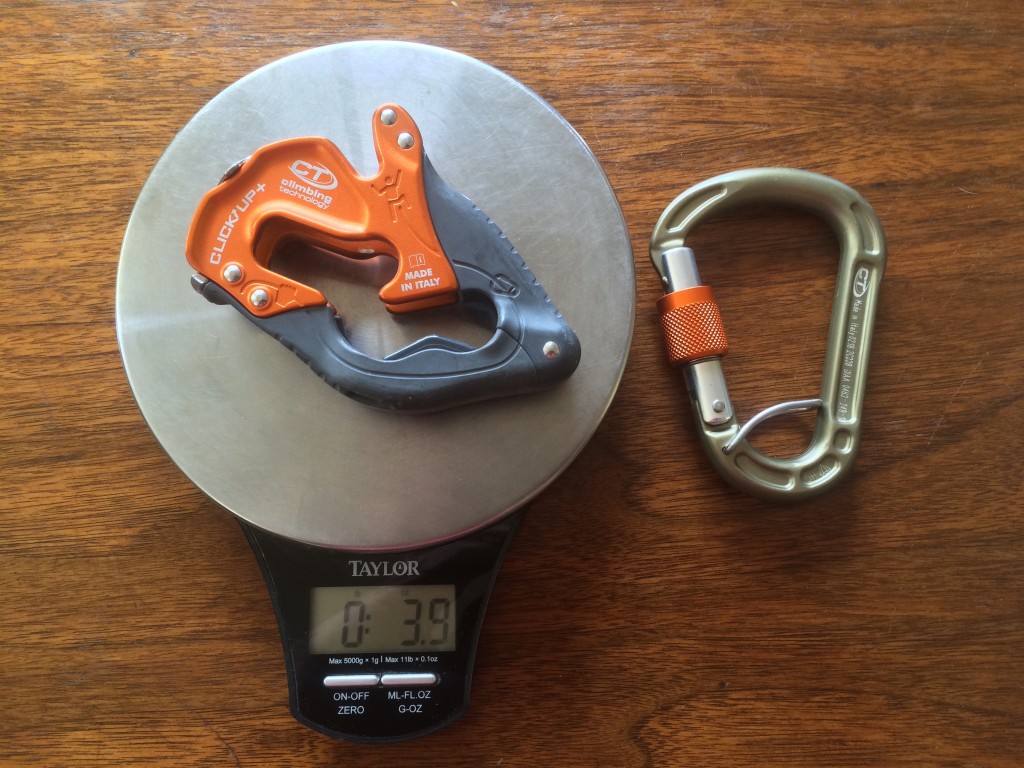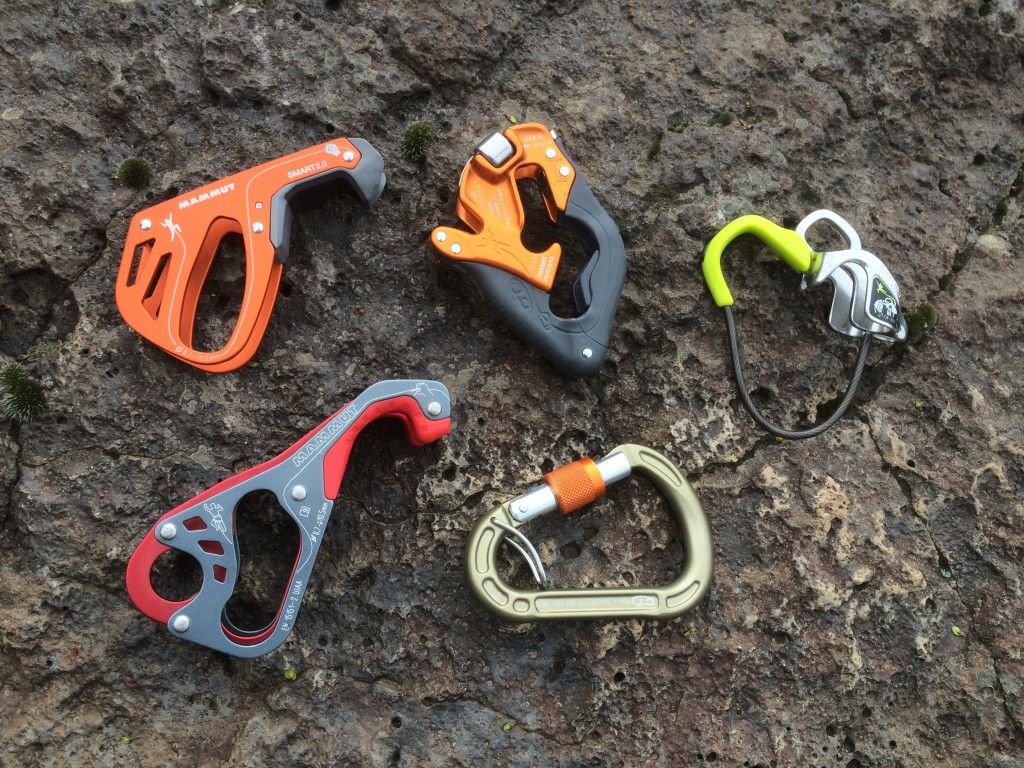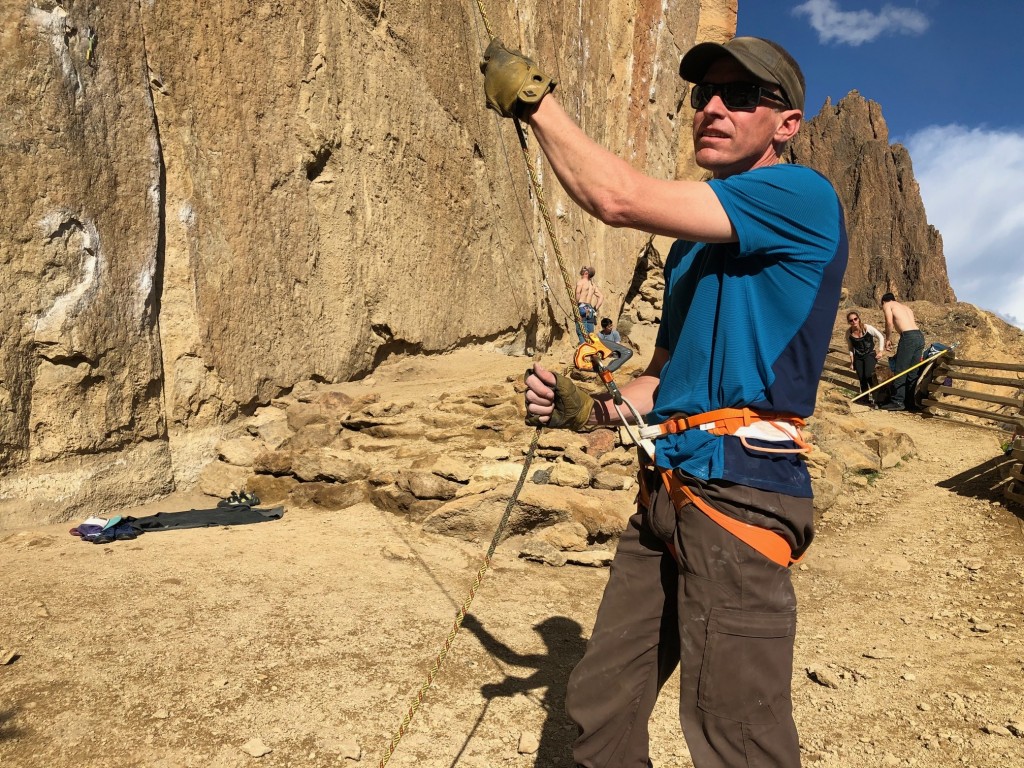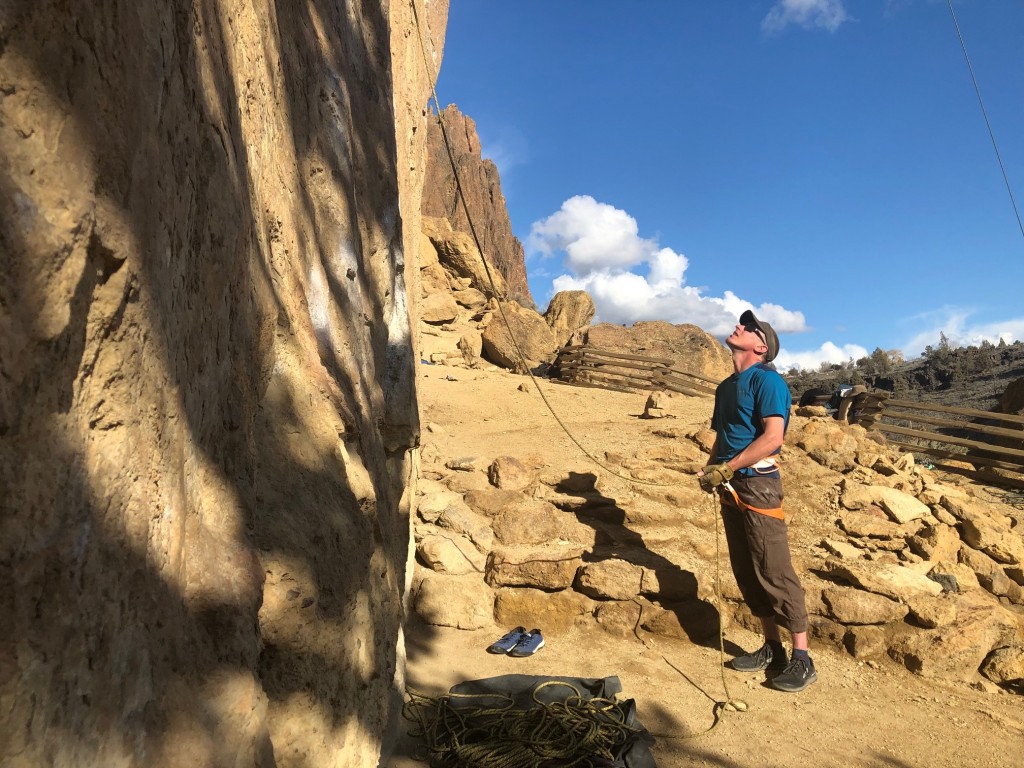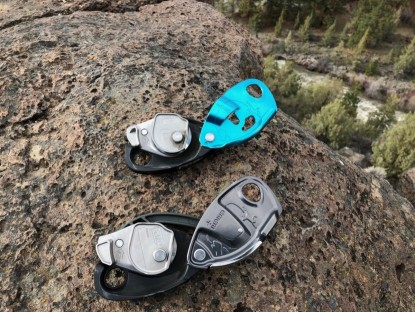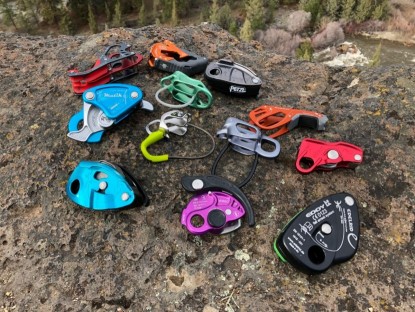Climbing Technology ClickUp +. Review
Our Verdict
Compare to Similar Products
 This Product
Climbing Technology ClickUp +. | |||||
|---|---|---|---|---|---|
| Awards | |||||
| Price | $100 List $85.20 at Amazon | $94.99 at Amazon Compare at 3 sellers | $100 List $99.95 at Amazon | Check Price at Backcountry Compare at 3 sellers | Check Price at Backcountry Compare at 2 sellers |
Overall Score  |
|||||
| Star Rating | |||||
| Bottom Line | Perhaps a bit too complicated for its purpose: smooth and simple functionality | By far the most popular belay device in the world is also one of the very best | The most ergonomic device for lead belaying, but it's not great for top-roping | Simple, durable, and optimal value for multi pitch climbs | Lightweight and cost effective while providing additional tools for catching falls |
| Rating Categories | Climbing Technology... | Petzl GriGri | Trango Vergo | Black Diamond ATC G... | Edelrid Mega Jul |
| Catch and Bite (30%) | |||||
| Lowering and Rappelling (30%) | |||||
| Feeding Slack (20%) | |||||
| Weight and Bulk (10%) | |||||
| Auto Block (10%) | |||||
| Specs | Climbing Technology... | Petzl GriGri | Trango Vergo | Black Diamond ATC G... | Edelrid Mega Jul |
| Style | Passive assisted braking | Active assisted braking | Passive assisted braking | Auto-block tube | Passive assisted braking |
| Recommended Rope Diameter (Single) | 8.5 mm - 11 mm | 8.5 mm - 11 mm (optimized for 8.9 mm - 10.5 mm) | 8.9 mm - 10.7 mm | 8.9 mm - 11 mm | 8.9 mm - 10.5 mm |
| Recommended Rope Diameter (Half) | N/A | N/A | N/A | 8.1 mm - 11 mm | Larger than 8.5 mm |
| Recommended Rope Diameter (Twin) | N/A | N/A | N/A | 8.1 mm - 11 mm | Larger than 7.9 mm |
| Weight (oz) | 3.9 oz | 6.3 oz | 7.1 oz | 2.8 oz | 2.5 oz |
| Double Rope Rappel? | No | No | No | Yes | Yes |
| Belay Off Anchor? | No | Yes | Yes | Yes | Yes |
| Assisted Braking? | Yes, passive | Yes, active | Yes, passive | No | Yes, passive |
Our Analysis and Test Results
The ClickUp + doesn't look like any other belay device you will see, and we had many people ask us what it was every time we were testing it. When a certain amount of force is applied, the rope pulls the carabiner upward in the device, making a “clicking” noise, which the device is named after, and signifying the device is locked. Because there are lever arms that hold the carabiner in place while lead belaying, the device comes with its own locking HMS style carabiner that fits it perfectly and must be used for belaying every time. We also like how if the device is accidentally loaded backward, despite the pictures telling you which way is correct, you can still safely lower your climber back to the ground.
Unlike other passive assisted braking devices, you do not need to hold the ClickUp + at a certain angle in order to feed rope through it, and therefore there is no handle. However, the slightest amount of tension from the leader will lock up the device, and you must then push it up to unlock it, then move it back down into the correct position, not unlike some carnival game, all while your leader is yanking for slack after you short-roped them. This is not easy to do. The trick to feeding out slack in the first place is that you cannot allow even the slightest tension to come from your brake hand, basically meaning you cannot grip the brake rope. However, you still need your hand on the brake line for safety, so it feels slightly like you are working at cross purposes. Also worth noting is that the brake line must not be held up next to the lead line, or the device will not function as it should to lock up. If this sounds a bit complicated, that's because it is, and this device took us longer than any other to figure out completely and master. Only after watching this video, which we highly recommend, then using the device many times, then watching the video again, then using it again, did we finally master the techniques.
Performance Comparison
Catch and Bite
The ClickUp + certainly locks up reliably, perhaps too reliably. It has two different notches that the carabiner with the rope wrapped around it sits in — the upper one for top-roping and the lower one for leading. When tension is placed on the rope with the locker in the lower position, it slides upward very quickly, pinching the rope to lock it, and “clicking” in the process. This system is reliable, smooth, and provides auditory feedback. The delay as the locker slides upward may also allow a little extra rope to slip through the system, adding a touch of dynamic-ness to the catch, which is always welcome.
In top-rope mode, the locker does not need to slide and click upwards, as it is already positioned at the top of the device. Tension from either the climber or the brake hand reliably locks the device. One thing to beware of, however, is that the device will not reliably lock if the two strands of the rope are next to each other pointed up. There needs to be a V shape between the two strands of rope, as displayed in the instructional video.
Lowering and Rappelling
To lower a climber using the ClickUp +, or to rappel a single strand of rope, requires a unique technique. While holding the climber on the end of the rope, the device will be locked up. To release it and lower, one is meant to hold the brake end of the rope with one hand, and with the other grab the device, which will be oriented horizontally, and push the bottom of it down, releasing tension and enabling rope to slide through. It takes a bit of practice to find the sweet spot and requires a bit more effort to push the device into the right position than the easier to use handles on the Mammut passive assist devices. We also experienced a bit of a weird high-frequency rubbing or vibration when lowering, which didn't seem unsafe, but is not super smooth as we would expect.
Feeding Slack
Feeding slack to a leader with this device is certainly safe, but surprisingly easy to short rope your partner, and once locked the device is a bit unwieldy to unlock into the correct leading position again, especially if the leader is still trying to yank for rope. Unlike other passive assist devices, one does not need to hold a lever up to keep the device in the correct position when feeding slack, although those other designs may be a bit more foolproof in the end. You can easily feed slack in the standard two-handed method as with traditional belay devices, but when your leader needs to clip and wants an armload of slack, you need to yank it out, but applying not an ounce of grip force to the brake line with your hand, or you will lock the device up. Of course, the brake line should still be running through your brake hand, and you should be ready to grip it tight if a fall happens. Needless to say, an extremely attentive belay is needed at all times to prevent locking the device up, and it is simply nowhere near as user-friendly as most other belay devices.
Weight and Bulk
On our scale, the ClickUp + weighed 3.9 ounces, not including the carabiner that comes with it. Since all devices need a locking carabiner, which wasn't included in their weights, we didn't feel it was fair to weigh the carabiner with this one. It is quite a bit larger than a standard belay device, but roughly the size of a GriGri and weighs a couple of ounces less.
Auto-Block
In their user manual, Climbing Technology cites that you should not belay off the anchor or use this device in auto-block mode. This basically limits the range of applications to single-pitch cragging.
Value
This device retails for around double the price of most passive assist belay devices. Of course, a nice locking carabiner is included (and must be used!), but this still makes it the most expensive passive assist device in this review. Since it is by no means our top recommendation, we have a hard time calling it a good value.
Conclusion
The ClickUp + is an innovative passive assist braking device with a reasonably large following in Europe. We have literally never seen one being used in the US, although that is no reason you shouldn't try it. While it has some solid safety features that are certainly recommendable, we also feel that functionally it is a bit complicated and difficult to master, not to mention a bit expensive compared to competitors.


